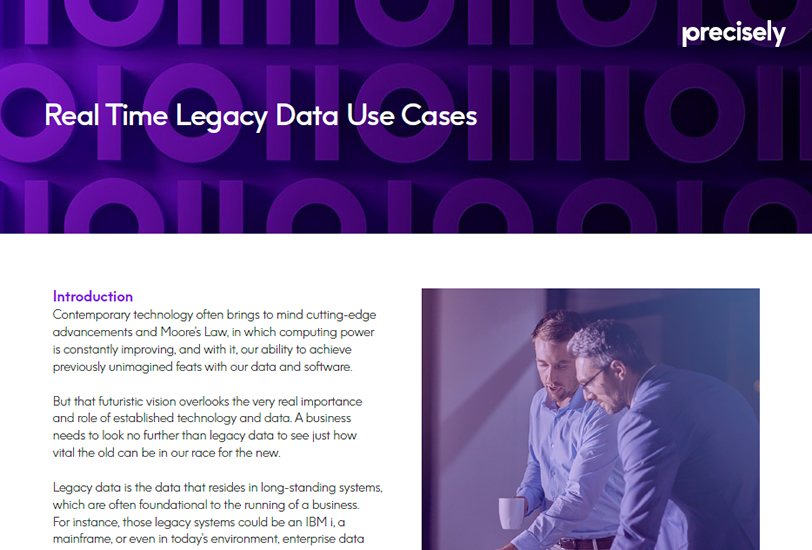White Paper
Real-Time Legacy Data Use Cases
Contemporary technology often brings to mind cutting-edge advancements and Moore’s Law, in which computing power is constantly improving, and with it, our ability to achieve previously unimagined feats with our data and software. But that futuristic vision overlooks the very real importance and role of established technology and data. A business needs to look no further than real-time legacy data to see just how vital the old can be in our race for the new.
Legacy data is the data that resides in long-standing systems, which are often foundational to the running of a business. For instance, those legacy systems could be an IBM i, a mainframe, or even in today’s environment, enterprise data warehouses and relational databases. The legacy data in these mission-critical systems can be game-changing for a variety of applications.
This data is often curated, high quality, and relevant to important aspects of the business. It is just the sort of data needed by AI, analytics, and other modern applications. What is often misunderstood about this data is how it can, and should, be used in real time to power a business.
Explore 4 real-time legacy data use cases
This white paper explores why legacy data is frequently difficult to access in real time and describes use cases that illustrate how impactful legacy data can be when put to real time use.
Download this white paper to explore 4 real-time legacy data uses cases.
To begin, let’s clarify how we are thinking about real time when it comes to legacy data. Real time access is obviously needed when transactions are taking place in those systems – for example, banking transactions commonly take place on mainframes – and that data constantly changes. Those changes need to be accessed in real time by downstream systems that rely on that data. But even if the data on the legacy systems doesn’t change as frequently, there are use cases that require real time access to this data. For example, a fraud detection application needs to marry real time data streams with data from legacy systems that provide the context needed to accurately evaluate the likelihood of fraud.
